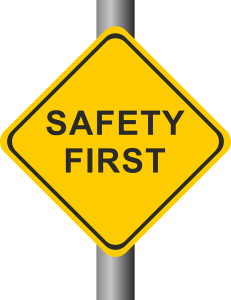 When used appropriately, herbicides can help to manage weed growth and save you time and money. However herbicides are hazardous chemicals. They have the potential to create immediate or long-term health effects from their handling and use.
When used appropriately, herbicides can help to manage weed growth and save you time and money. However herbicides are hazardous chemicals. They have the potential to create immediate or long-term health effects from their handling and use.
For this reason, every herbicide is issued with a product label. To minimise the risks associated with herbicides, it’s important that you use the most appropriate control method for your situation and that you strictly follow the product label.
To help you safely navigate these risks, here’s a quick guide to herbicide labels. You can also access a Safety Data Sheet (SDS) for each herbicide from the manufacturers website.
1. Read the product label and understand the warnings
The product description outlines the active constituent, herbicide group, intended use and manufacturer’s details. There are many generic branded chemicals out there now, so it is important to understand what the product really contains and what alternatives are available.
2. Understand the directions for use, general instructions and precautions
This section of the label describes specific requirements, application rates and with-holding periods. It’s important to note that many herbicides are toxic to animals and may require excluding grazing stock for a given period of time. This information is clearly printed on the label, generally under with-holding periods or other information. You’ll also find information on the herbicide’s mode of action, mixing instructions and requirements for protection of the environment, non-target plants, crops and livestock. Remember, you must use a herbicide that is registered for use in your state and on your specific weed problem and situation. This protects you, your stock, produce and the markets.
3. Follow the storage and disposal instructions
These instructions outline storage and disposal information, safety directions, first aid, approval numbers and date of manufacture. Note that most herbicides don’t have an unlimited shelf life and that other factors (such as sun exposure from keeping herbicides on the backs of utes) can break the chemical down and reduce shelf life.
4. Make sure you have appropriate licences, permits and training
Within Queensland, if you distribute (spray, spread or disperse) herbicides using ground equipment , on land that you do not own or occupy, you may require a commercial operator’s licence. For more information see the Queensland Government business portal.
5. Discuss your herbicide spray plans with neighbours
It’s always good etiquette to discuss your herbicide application plans with you neighbours (and in fact, sometimes it’s the law). Issues such as spray drift and with-holding periods can affect neighbouring properties and stock, so be sure to clearly outline your intended spray dates, along with the type of herbicide you intend to use, delivery methods and product specific requirements.
6. Keep accurate records
Effective weed treatment takes time and persistence. Before commencing any control program, you should ensure you have correctly diagnosed the problem, developed a practical treatment strategy and have the resources to implement appropriate long term controls. You should always keep accurate records of your herbicide distribution activities, to ensure you’re meeting your legislative requirements. Good records will also enable you to assess the effectiveness of your control efforts and refine your approach to ensure you’re getting a good return on your investment.
Do you follow herbicide product labels? Are you protecting your interests and minimising risks to human health, agriculture, livestock and the environment?